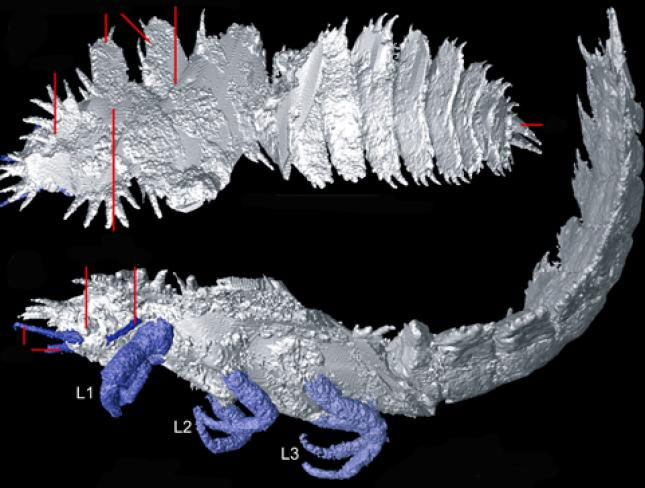3D images of pupae over 300 million years
Experts from the University of Manchester (UK) used 3D technology to study 305 million-year-old pupae.

3D figure of the specimen named Anebos phrixos
British scientists say high-resolution CT scans have allowed them to recreate prehistoric pupae, relying solely on the only evidence in the field to be holes in the stone.
By placing boulders on CT scanners and capturing more than 3,000 X-ray images for each of the different angles, experts can create images of these birds in practice, according to a PLoS ONE report.
While an object has many similarities with the current cockroach species, the other specimen has pointed vertebrae and no longer exists.
Both, about 2cm long, dating back to the end of the Stone Age, were members of the Polyneoptera, including cockroaches, mantis, crickets, locusts and earworms.
Russell Garwood, the team leader, said the Coal Age was the time when the first amphibians were insectivores.
He hopes the new discovery will allow scientists to better understand biology, the development of primitive insects and key evolutionary steps to help them survive today.
- Killer bee parasites hidden in flies pupae 35 million years
- Thanh Hoa: Number of people poisoned by eating silkworms and silkworm pupae
- How is silk created?
- CO2 in the atmosphere is a record high in 2 million years
- Beautiful Vietnamese images of 100 years ago
- Amazon River 11 million years old
- Tooth turtles can last more than 100 million years ago
- HIV was 5 million years ago
- Whales and bats have something in common
- Revive the ancient spider
- The cause of hot climatic phenomenon gradually appeared from 55 million years ago
- Fossil flowers were discovered more than 174 million years ago
 Discovered an ancient centipede fossil 99 million years old
Discovered an ancient centipede fossil 99 million years old Discovered bat-like dinosaurs in China
Discovered bat-like dinosaurs in China Discovered a 200-year-old bronze cannon of the coast
Discovered a 200-year-old bronze cannon of the coast Discover 305 million-year-old spider fossils
Discover 305 million-year-old spider fossils